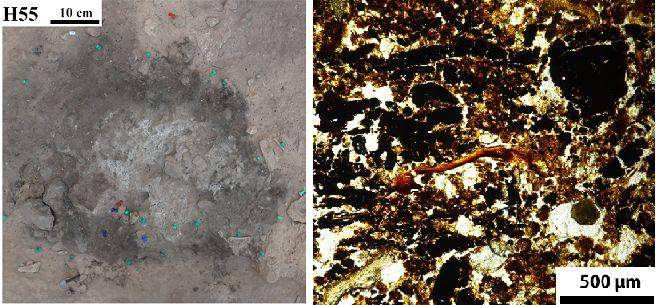Using ancient fire remains from 11 well-preserved and overlapping open-air hearth structures, scholars have inferred Neanderthal group mobility and settlement patterns which indicate specific occupation episodes, perhaps according to seasons changing, according to a new study.
Until recently, most household activities are thought to have taken place around hearths or fires and it was no different in the paleolithic world. The Middle Paleolithic site El Salt in Spain contains 11 overlapping open-air hearth structures but it was unclear whether these hearths were formed during successive short-term site occupations or fewer, longer term occupations.
By examining the micromorphology of the different layers within the hearth structures to assess occupation timings within the study unit and conducting both a lipid biomarker analysis and isotope analysis to gain information about potential food and fuel, they found stratified hearths built on multiple different topsoils over different periods of time.The authors suggest these data indicate at least four successive short-term Neanderthal occupations separated by relatively long periods of time, potentially based around the seasons.

Field photograph of El Salt Neanderthal combustion structure and microscope photograph of organic components in the black layer of the combustion structure. Credit: Leierer et al, 2019
The burned organic matter present at the El Salt hearths is rich in herbivore excrement and flowering plant residues. The presence of flint and bone shards, as well as conifer wood charcoal collected from trees not present at the site, provide evidence of limited activity at the site.
The authors suggest their molecular and micromorphological methods would work well at similar paleolithic sites where fires were built. Their findings provide evidence for successive short-term Neanderthal occupations at this site, and could inform our understanding of Neanderthal group mobility and settlement more generally.
Citation: Leierer L, Jambrina-Enríquez M, Herrera-Herrera AV, Connolly R, Hernández CM, Galván B, et al. (2019) Insights into the timing, intensity and natural setting of Neanderthal occupation from the geoarchaeological study of combustion structures: A micromorphological and biomarker investigation of El Salt, unit Xb, Alcoy, Spain. PLoS ONE 14(4): e0214955. https://doi.org/10.1371/journal.pone.0214955


